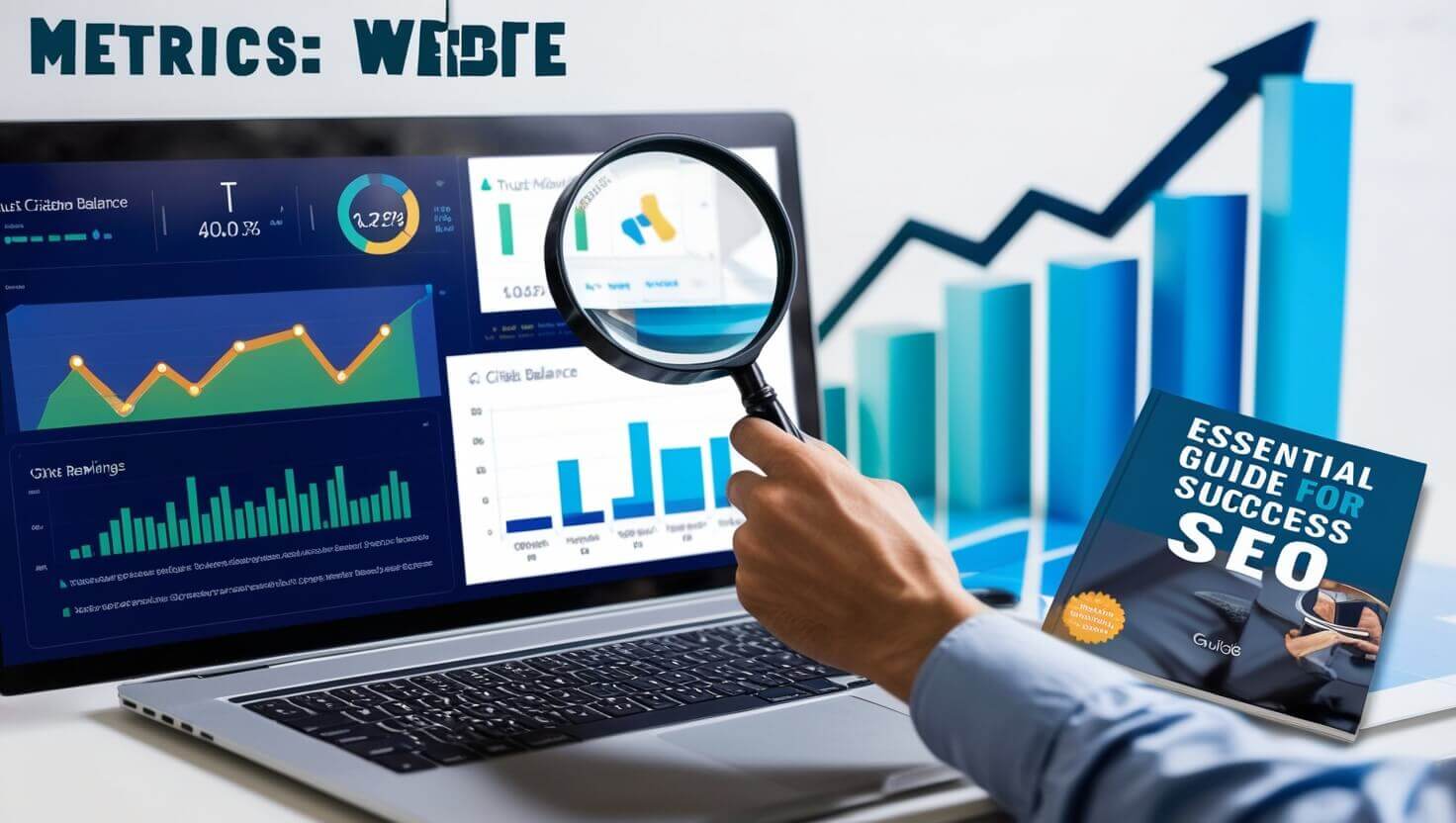Boost Your Rankings with Trust and Citation Balance - The Essential SEO Metrics for Success

Boost Your Rankings with Trust and Citation Balance: The Essential SEO Metrics for Success
Table of Contents
- Introduction: Why Trust and Citation Balance Matter
- Understanding Trust Flow and Citation Flow
- The Importance of a Healthy Citation Profile
- How to Build Trust Through Quality Backlinks
- Monitoring and Improving Citation Balance
- Advanced Strategies for Optimizing Trust and Citation Metrics
- Conclusion: Actionable Takeaways
Introduction: Why Trust and Citation Balance Matter
In the ever-evolving world of SEO, staying ahead requires more than just creating excellent content and having a beautiful website. Welcome to 2024, where two essential SEO metrics—trust and citation balance—are making waves. If you're not paying attention to these metrics, you're likely falling behind.
Imagine this: your site is the life of the party, but Google, the ultimate party host, doesn’t trust you enough to let you in. Why? Because you haven’t built enough trust with the right crowd, and your citation balance is off. Trust me—no pun intended—this isn't a place you want to be.
Trust and citation balance are like the digital handshake and the head-nod of approval you need from search engines to climb the ranks. When these metrics are aligned, your website doesn’t just survive the competition—it dominates. In this blog, we'll delve deep into how trust and citation balance can significantly impact your SEO strategy and give you a roadmap for achieving SEO success. Ready? Let’s dive in.
Understanding Trust Flow and Citation Flow
To understand why trust and citation balance matter, you first need to grasp Trust Flow and Citation Flow, two metrics that are crucial for SEO success.
Trust Flow: The Backbone of Trustworthiness
Trust Flow, a metric developed by Majestic, measures the quality of backlinks to your site. Think of it as Google’s way of asking, “Are the people talking about you worth listening to?” Links from reputable, authoritative websites boost your Trust Flow, signaling to search engines that you are a trusted source in your niche.
Why Trust Flow Matters
In the SEO world, links are like votes. But not all votes carry the same weight. A link from The New York Times is far more valuable than a dozen links from obscure blogs. Google is smart, and it knows the difference between quality and quantity.
Higher Trust Flow translates to higher credibility, which improves your ranking on search engine results pages (SERPs). Trust me (pun intended), if you’re not focusing on Trust Flow, you’re leaving a lot of SEO value on the table.
Pattern Interrupt:
“But what if I have a ton of links?”
Quantity without quality is like having a million Instagram followers but zero real-life friends—no real value! Focus on quality backlinks that signal trustworthiness to search engines.
Citation Flow: The Popularity Contest
On the flip side, Citation Flow measures the quantity of backlinks to your site. It's essentially a measure of how many people are talking about you online. The more links you have, the higher your Citation Flow will be. But here's where things get tricky: having more citations doesn’t necessarily mean you’re more trusted.
Why Citation Flow Matters
Citation Flow can help you understand how widely known your website is, but if it’s not paired with a strong Trust Flow, it could mean that a lot of low-quality sites are linking to you. That’s why balancing Citation Flow with Trust Flow is critical. In SEO, it’s not just about being popular—it’s about being popular with the right crowd.
The Importance of a Healthy Citation Profile
You’ve probably heard that links are the currency of the web. But what you might not know is that not all links are created equal. If your site is filled with low-quality backlinks, you're building a house of cards that could collapse at any moment—especially when Google’s next algorithm update rolls out.
Why a Skewed Citation Profile Hurts Your Rankings
User Experience (UX)
Here’s the catch: focusing too much on quality can also hurt you if it means you’re not getting enough links. It’s all about balance.
What Does a Healthy Citation Profile Look Like?
A healthy citation profile has a good mix of high-quality links from authoritative sites and a reasonable number of links from lesser-known, but relevant websites. Think of it as a balanced diet for your SEO strategy. You need a little bit of everything to keep things running smoothly.
Pattern Interrupt:
“But what about that one spammy link I can’t seem to get rid of?”
Don't stress! Every site has a few bad apples. Focus on the big picture and ensure that the majority of your links are from credible sources.
How to Build Trust Through Quality Backlinks
When it comes to SEO success, backlinks are king. But not just any backlinks—high-quality backlinks from trusted, authoritative websites. The idea is to get credible sources to link to your content, signaling to search engines that your site is trustworthy.
Strategies for Building High-Quality Backlinks
- Guest Blogging: This is one of the oldest tricks in the SEO book, but it works. Writing for authoritative blogs in your industry not only exposes your brand but also provides you with high-quality backlinks.
-
Collaborations with Industry Leaders: Forming partnerships or collaborating with other reputable websites can lead to mutual backlinking, which boosts both Trust Flow and Citation Flow.
-
Backlink Audits: Regularly auditing your backlink profile is essential to ensure you’re not collecting toxic links. Use tools like Ahrefs, Moz, or Majestic to monitor your backlink profile and disavow spammy or harmful links.
Why Quality Matters More Than Quantity
A single backlink from a site like Forbes or TechCrunch can be more valuable than hundreds of backlinks from low-quality sites. The reason? Google values trust. High-quality links improve your Trust Flow and signal to search engines that your site is reputable and credible.
Pattern Interrupt:
“But what if I can’t get backlinks from major sites?”
Don’t worry! Focus on smaller, niche-relevant websites. Even though they might not have the clout of a major publication, they still carry value if they’re trusted in your industry.
Monitoring and Improving Citation Balance
So, how do you know if your trust and citation balance is healthy? This is where monitoring tools come into play. Keeping an eye on both your Trust Flow and Citation Flow will give you a clearer picture of your SEO health.
Tools for Monitoring Citation Balance
- Majestic: Majestic is the go-to tool for measuring both Trust Flow and Citation Flow. It gives you a clear idea of how your site is doing in terms of both quality and quantity of backlinks.
-
Moz: While Moz doesn’t specifically use Trust Flow and Citation Flow metrics, it does offer Domain Authority (DA), which is another indicator of how well your site is likely to rank.
-
SEMrush: SEMrush offers an all-in-one solution for tracking your backlinks and understanding which links are helping or hurting your SEO strategy.
The Importance of Regular Audits
Auditing your backlink profile isn’t a one-time thing. SEO is a marathon, not a sprint, and regular audits help ensure that you’re staying on track. Look for any sudden spikes in low-quality links, and address them immediately by disavowing them.
Advanced Strategies for Optimizing Trust and Citation Metrics
Once you’ve got the basics down, it’s time to level up with advanced SEO strategies. At this stage, you're not just collecting backlinks; you're optimizing your entire site for trustworthiness and SEO authority.
Leverage Content Marketing
Creating high-quality, shareable content is one of the best ways to naturally earn backlinks. Think infographics, case studies, or industry reports—content that people naturally want to link to because it provides value.
Secure Your Website with HTTPS
It’s 2024. If your site doesn’t have HTTPS by now, you’re seriously hurting your trust signals. Search engines—and users—see HTTP sites as insecure, which can significantly lower your rankings. Make the switch to HTTPS and signal to both search engines and users that your site is safe and secure.
Pattern Interrupt:
“Wait, does that mean I’ve been ranking lower all this time because of HTTP?”
Yes, but it's never too late! Secure your site with HTTPS today and start climbing back up the rankings.
Improve User Experience (UX)
Google is smart, but it’s also sensitive to how
users interact with your site. Sites that are difficult to navigate, slow to load, or not mobile-friendly can lose trust with both users and search engines. Improving site speed, mobile usability, and navigation are all critical steps to building trust.
Conclusion:
In 2024, balancing trust and citation metrics is not just recommended—it’s essential for SEO success. By focusing on high-quality backlinks, regularly monitoring your citation profile, and maintaining a secure, user-friendly website, you’re positioning your site to succeed in the competitive SEO landscape.
Here are some actionable takeaways:
- Focus on quality over quantity when building backlinks.
- Regularly audit your backlink profile and remove low-quality links.
- Ensure your website is secure with HTTPS.
- Optimize for user experience to build trust not only with search engines but also with your audience.
It’s time to stop worrying about outdated metrics and start focusing on the SEO metrics that matter: trust and citation balance. Start implementing these strategies today, and watch your rankings soar!
By maintaining a strong trust and citation balance, you’ll not only improve your rankings but also solidify your website’s reputation as a credible and authoritative source.
About Prateeksha Web Design
Prateeksha Web Design Company is a renowned entity in the digital marketing sphere, offering comprehensive SEO services to enhance online presence. Their unique approach encompasses enhancing trust and citation balance, two essential SEO metrics. They focus on cultivating high-quality backlinks and consistent citations to boost your website's authority, ultimately leading to improved search engine rankings, greater visibility, and business success.
Interested in learning more? Contact us today.
